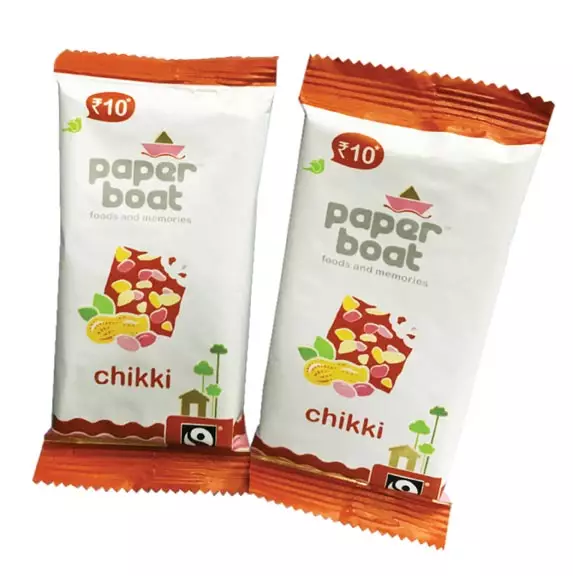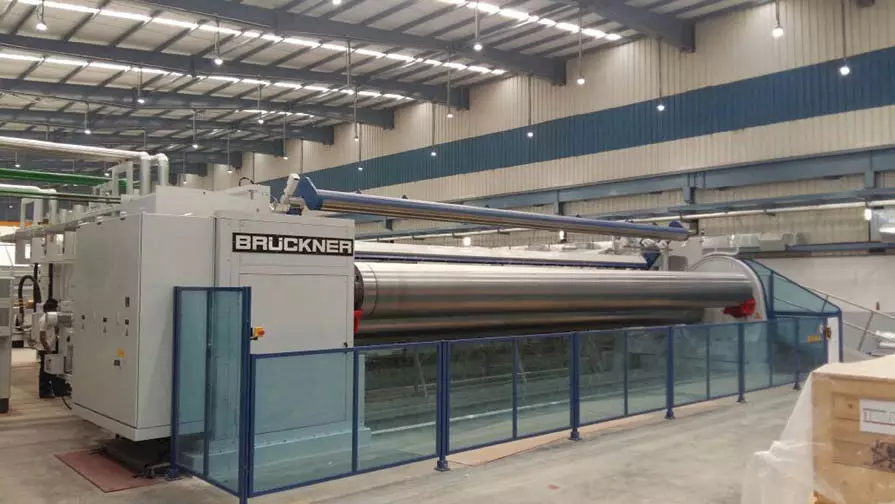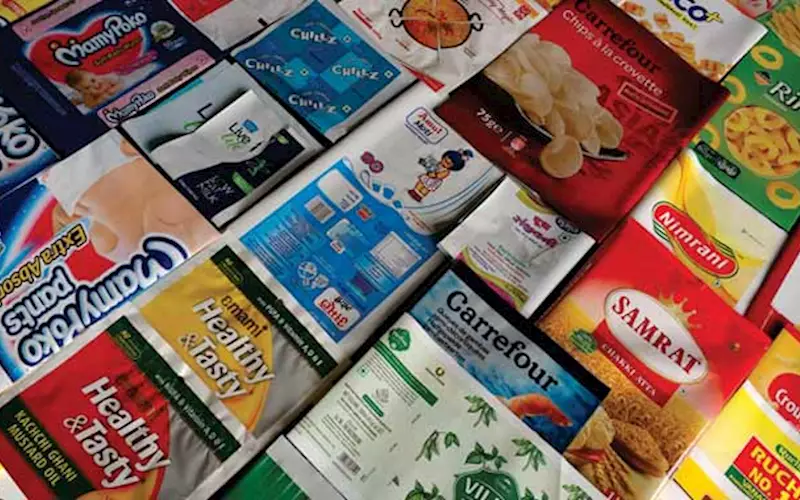Ready to fill the packaging leadership with big ideas
Change is hard. Today, the packaging shapers are talking about sustainability and innovation and seeking new ways to thinkfluence. But what does it all mean? Rushikesh Aravkar finds out
23 Feb 2018 | By Rushikesh Aravkar
National Green Tribunal (NGT) is the buzzword currently in the flexible packaging circles. This scribe was at an industry event last week where he overheard three packaging technocrats schmoozing about the NGT and the proposed ban on the multi-layer flexible packaging.
“I'm working on a brilliant idea. I produce quite a lot of 60micron PET / 8micron poly laminate structure. Now if I am able to further downgauge poly to 6microns, the impurity level in the PET-poly structure is reduced to 10%. Probably, that should be acceptable by NGT,” says one.
The other adds, “I am a gravure converter. I have dared to invest in a brand new European CI flexo press. There’s a rumour that one of my top customers, who consumes more than 60% of my production capacity, is working with his top vendor to change laminate structures and thus shift the entire SKU (Stock Keeping Unit) range from gravure to flexo. I want to be prepared for whatever lies ahead.”
The third one proposes, “I’m not sure what I’m going to do. Shouldn’t the paper-Al foil structure that was used when they banned plastic packaging for gutkha, pan masala and tobacco, work for at least a few products?”
The nervous edgy conversation continues.
Background to NGT
National Green Tribunal Act, 2010 (NGT) is an Act of the Parliament of India which enables creation of a special tribunal to handle the expeditious disposal of the cases pertaining to environmental issues.
NGT is contemplating a ban on multi-layer plastic packaging and this has thrown the entire flexible packaging industry on an innovation spree. All sorts of ideas are being mulled over.
It started in early 2013 when a small Dehradun-based NGO Him Jagriti Uttaranchal Welfare Society filed a petition with National Green Tribunal (NGT) seeking a ban on use of plastic bottles, multi-layered plastic packages, and PET bottles. Taking cognizance of the health and environment impacts of plastic packaging, the NGT, on 3 March 2015, said, “Prima facie, we are of the view that there has to be a restriction placed upon such packaging and generation of municipal plastic waste.”
The NGT further ordered that a Public Notice be issued to the manufacturers and users of multi-layered/PET bottles packaging, so that interested parties could address the tribunal before the matter was finally disposed.
Meanwhile, on 18 March 2016, the Ministry of State for Environment, Forest and Climate Change of India issued Plastic Waste Management Rules 2016 guidelines, which called for the large-scale implementation of proper plastic disposal practices and phasing out non-recyclable, multi-polymer packaging.
The guidelines state, “Manufacture and use of non-recyclable multilayered plastic should be phased out in two years’ time”.
The multi-layered flexible packaging currently used contains multiple layers of different polymers and additives that make it incompatible during the recycling process. The common structures used in India are PET/PE or PET/MetPET/PE.
While the concluding directive in the Him Jagriti case is still pending with NGT and the next hearing is slated for 20 March 2018, the two years’ deadline set by the Plastic Waste Management Rules 2016 is just a month away.
NGT impact
On cue, one of the largest polyethylene producers in the world, Dow Packaging and Specialty Plastics (P&SP) has recently introduced a new formulation of polyethylene (PE) resins to create an all-PE laminate solution for flexible packaging applications.
Dow's mono-material all-PE laminate packaging can be fully recycled at the end of its lifecycle. The company claims that the new packaging solution does not compromise on aesthetics, brand perception, and performance.
Bambang Candra, Asia Pacific commercial vice president for Dow Packaging and Specialty Plastics, says, “Dow encourages the responsible production, disposal, and recycling of plastic, and our all-PE laminate solution looks at addressing the flexible plastic waste management in India by allowing for full recyclability.”
“We are excited by the new product and will be working closely with local brand owners to implement our new solution to help them meet regulations around the reduction of usage of multi-polymer plastics to save the environment.”

Pankaj Poddar, CEO, Cosmo Films, says, “At present, there is much deliberation going on across the country as to the right method to achieve this. If the enforcement of the multi-layer plastic packaging was to become stringent, it will actually be a positive step for Cosmo Films because BOPP and CPP structures are recyclable in nature. It’s just that such a directive must be properly thought through and implemented in the right way.”
“Sustainability is gaining momentum globally and has become increasingly important for the packaging market too as demand for more sustainable systems emerge from all sections of the society which include consumers, manufacturers as well as retailers. As far as Cosmo Films as a vital player in the packaging industry is concerned, both our product offerings currently, BOPP and CPP films (as standalone films) are recyclable in nature and also support the formation of homogenous laminate structures which are again easy to recycle,” adds Poddar.
He highlights one such structure the company developed recently for an FMCG behemoth, which includes a completely recyclable two-ply OPP/OPP structure for soap wrapping application. “The recyclable soap wrap film formed an interesting case-study as it helped both brands and converters fair better on laminate structure rationalisation (from three-ply to two-ply) and grammage reduction thus reducing the overall costs; better aesthetics because of pearlised effect and of course recyclability quotient.”
Paper Boat Chikki in CPP and OPP structure
When Hector Beverages introduced the traditional groundnut and jaggery-based candy, Paper Boat Chikki, in modern retail, putting it on par with other premium snacks like chocolates, it opted for CPP and OPP structure for its packaging. The pack was developed by Huhtamaki-PPL. To enhance the aesthetics and tactile aspects matt OPP is used as a print medium and transparent dyes and lacquers maximise the metallic effect of the barrier layer optimally, balanced with a white matt background. The specialised high barrier OPP provides the desired protection against moisture to avoid sogginess and oxygen to prevent rancidity and offer optimal shelf life. The sealant layer is CPP which enables packing the Chikki bars on high-speed HS lines at 350 packs per minute, without compromising on the seal. The USP of the pack is its easy tear functionality that was achieved through a combination of OPP and CPP. With this they achieved a mono-material PP laminate and thus eliminated the need to use PET.
To enhance the aesthetics and tactile aspects matt OPP is used as a print medium and transparent dyes and lacquers maximise the metallic effect of the barrier layer optimally, balanced with a white matt background. The specialised high barrier OPP provides the desired protection against moisture to avoid sogginess and oxygen to prevent rancidity and offer optimal shelf life. The sealant layer is CPP which enables packing the Chikki bars on high-speed HS lines at 350 packs per minute, without compromising on the seal. The USP of the pack is its easy tear functionality that was achieved through a combination of OPP and CPP. With this they achieved a mono-material PP laminate and thus eliminated the need to use PET.
As easy as it may sound, shifting from one laminate structure to a new structure is not an easy task. The different layers of the flexible packaging laminate have a function to perform. If you pick up a snack pouch in the Western countries, you will observe that it tears open as smooth as a hot knife cutting through butter as opposed to the snack pouches in India, which sometimes are a bit tedious to open. That’s because the packs in India are stronger than in the West for they need to sustain the harsh supply chain and handling conditions in India. This is also one of the reasons why PET/PE or PET/MetPET/PE structures are widely used in India. PET offers the strength and PE’s superior sealing properties together make a tough pack. Now, to find a plastic film which is as strong as PET and at the same time offers sealing properties like PE is difficult. In a bid to make a pack recyclable, the intrinsic properties of the material that is necessary for the packaging to perform its functions of safeguarding the product inside will be compromised to a certain extent.
One can, however, find a solution in water-based coatings. Michelman, which manufactures water-based coatings for flexible packaging, has recently invested in an innovation centre in Mumbai. This innovation centre aims to collaborate with brand owners, film manufacturers to develop innovative sustainable packaging solutions.
[[Michelman Innovation Centre for Coatings opens in Mumbai]]
Downgauging for sustainability

Reduction at a source and downgauging are an Uflex mantra says, Dr Sudhir Naik, senior general manager, new product development and corporate technical services, Uflex.
He says, “We have successfully developed plain heat-sealable BOPP films as thin as 8micron; BOPET films with 6.5micron thickness and heat-sealable 12micron metallised BOPP films that are suitable for printing and lamination. These films possess comparable machinability parameters to conventionally thicker films and provide significant source reduction ranging from 33% to 47%. These films have much lower carbon footprint than the films they replace.”
“In the current flexible packaging market in India, the converting machines are able to comfortably handle webs as thin as 10microns on an average. Although films have been downgauged to as low as 8microns in India these webs can pose challenges in terms of registration printing and winding characteristics. We feel that the concept of downgauging has more or less run its course in the flexible packaging space and the approach is probably exhausted in terms of further significance,” adds Naik.
Poddar says, “Downgauging always depends upon the needs of the customers for various end applications. For example, in the label segment, we can go down to 40microns from the standard 50microns for certain applications. For certain metallised films used for packaging applications, we can go as low as 9microns. This gives our customers better yield. In flexible packaging applications, we are successful in implementing thinner laminate structures by converting three-ply structures to two-ply without sacrificing the performance requirements. In some cases, it is also governed by government plastic regulations.”
There is a limit to reducing the thickness of any film without compromising on the essential barrier and mechanical properties, therefore the film manufacturers and converters are focusing on the concept of optimised packaging.
Naik explains, “The barrier of a downgauged film can be compensated by using special additives in the resin; by blending the polymers or through special surface treatment/s and application of speciality coatings. These special coatings work on three fronts – improving the barrier properties of films, improving the ink and metal adhesion characteristics, and improving the heat sealing characteristics.”
Uflex’s green PET films
Uflex has engineered green PET films wherein PTA (purified terephthalic acid) is manufactured from the oxidation of p-xylene while green MEG (monoethylene glycol) is manufactured from ethanol obtained from agro-based source. This film does not contain any MEG which is conventionally made through the crude oil route. The other green product is rPET film which contains up to 30% post-consumer recycled PET resins obtained from re-processing post-consumer PET waste like used PET bottles which otherwise would have been consigned to landfills. rPET films are USFDA and EU compliant for direct food contact having the same properties as films made from virgin PET resins.
Uflex’s R&D initiatives are focused on developing speciality coatings in-house. For instance, Uflex has been able to improve the peel-ability of lidding films with the help of a speciality coating. Likewise, there are speciality coatings to enhance the metal adhesion characteristics of the polymeric films for improving the barrier property of the ensuing laminate.
Poddar adds, “Reducing the thickness gives a commercial advantage, as well as the overall packaging material use, is reduced. This boosts the eco-friendly quotient of the product. We do this by designing of product recipes to maintain certain barrier properties. Cosmo is continuously working towards the development of new coatings such as universal printable synthetic paper; better and cost-effective barrier coatings; thermally activable coatings; and new tactile coatings. We also develop our own chemistries which give us unique propriety rights in certain speciality applications.”
Installation numbers
According to the WhatPackaging? estimates, 10 high-end imported gravure printing machines were sold in India in 2017 whereas around 70 locally manufactured presses were installed. On the CI flexo front, a total of 39 machines were installed in 2017 of which 12 are imported presses.
Even though gravure printing has significant dominance over flexography, industry experts suggest a visible trend in the shift from gravure to flexo.
An industry report on the Indian flexible packaging industry, Flexible Packaging Supply Demand – India, recently released by PCI Wood Mackenzie, says that despite the current uncertainty in the Indian economy, demand for flexible packaging continues to grow at a pace, reaching an estimated USD 5.6 billion in 2017.
According to the report, India now has the fourth largest flexible packaging market, representing around 6% of the global market, behind the US, China and Japan.
The report mentions that the double-whammy of demonetisation and the roll-out of GST caused the economy and in particular manufacturing to stall. This has had a major impact on India’s unorganised sector, which deals primarily in a paperless cash-only environment, and has borne the brunt of both government initiatives. This has had major implications on the country’s flexible packaging landscape and the balance between the organised and unorganised market sectors.
Robert Gilfillan, analyst with PCI Wood Mackenzie, says, “We expect that over the next five years, flexible packaging will grow at nearly 10% per annum. However, the expected growth in the organised and unorganised sectors will change significantly as the market comes to terms with demonetisation and GST. The organised sector will directly benefit from these government initiatives and continue to deliver strong growth over the next five years.”
BOPP and BOPET market
Anticipating this growth, packaging film manufacturers in India have been on an expansion mode. Not only are they focusing on bolstering manufacturing capacities but also on finding niche products and specialised applications by installing metallisers and coaters.
Last week, Cosmo Films announced commissioning of its second cast polypropylene (CPP) line and fourth metalliser, both with an annual capacity of 7,500 tpa. With the installation of these new lines, the company’s annual CPP films capacity will go from 1800 tpa to 9300 tpa and the metallised films will increase from 15000 tpa to 22,500 tpa.

Cosmo will install its second CPP line and the fourth metalliser, both with an annual capacity of 7,500 tpa
These new lines have been commissioned at company’s existing facility at Karjan, near Vadodara, which already houses BOPP lines, extrusion coating and chemical coating lines and a metalliser. The 2.85m CPP line is five-layered and is designed to produce speciality films (especially barrier films) for various packaging applications. The line has the possibility to have multi-layer combinations.
According to WhatPackaging? estimates, the current nameplate capacity of the Indian BOPET market is eight-lakh tpa and that of BOPP is 8.76-lakh tpa. However, the actual annual production is estimated to be 5.6-lakh tpa for BOPET and five-lakh tpa for BOPP.
Some of the top BOPET producers in India are: Jindal, Vacmet, Sparsh, SRF, and Ester among others. The top BOPP producers include: Jindal, Cosmo Films, Chiripal Poly, Max Speciality Films, and Uflex among others.
According to industry experts, there’s overcapacity in the market.
Poddar says, “The fallout of overcapacity can be witnessed in an erosion of margins in the business and the price premium. One can see most of the film suppliers trying to tackle this problem by diversifying to niche segments and increasing the ratio of speciality products in their product mix. But the problem with all players trying to do the same thing is that we see more and more products getting commoditised.”
Naik agrees, “Yes, the data (of the organised sector) does indicate that there is currently an overcapacity of BOPET and BOPP films in India, but considering that the flexible packaging sector in the country is growing at around 20% every year and that much of these films are required for the purpose of converting, the existing installed capacities will be utilised in the next 18 to 24 months ceteris paribus. The installed overcapacity certainly has a bearing on bringing down the price of the substrates in the market thereby making film manufacturing more of a commodity and volume-driven business. This can be vicious. Increasing the capacity any further will weigh upon the price and commoditisation of the product with very little or no innovation and value addition.”
Invest to innovate
Poddar says, “Cosmo started focusing on specialities much before a lot of other players and we believe we are much ahead in the race. We keep strengthening our R&D capabilities both in terms of hardware and the right set of people who can bring new developments on board from time to time. We invested close to USD 8,00,000 to upgrade its R&D facilities last year alone.”
The company now boasts of one of the most comprehensive facilities for testing, analysing and R&D purposes in the country.
To diversify its growth into speciality segments, Cosmo has also announced plans to install a new production line for speciality polyester (BOPET) films by the last quarter of 2018-19. The new line will be commissioned at the Waluj plant site in Aurangabad and will help company offer a more comprehensive product basket to flexible packaging and labelling manufacturers.
Conclusion
Any knee-jerk reaction such as a blanket ban on the multi-layer plastic packaging will disrupt the entire value chain and the conversations at PlastIndia suggest that this is very unlikely. However, this should not stop the industry stakeholders from innovating.
During the World Economic Forum in Davos last month, Amcor pledged to make all its packaging to be recyclable or reusable by 2025. With this commitment, Amcor has joined a list of big brands and retail companies who have set similar 2025 sustainability goals including Coca-Cola, Ecover, Evian, Loreal, Marks & Spencer, Mars, PepsiCo, Unilever, Walmart and Werner & Mertz.
Sooner or later, it’s either the regulatory bodies or the customers, who will push companies to go green. There’s no escape.











 See All
See All